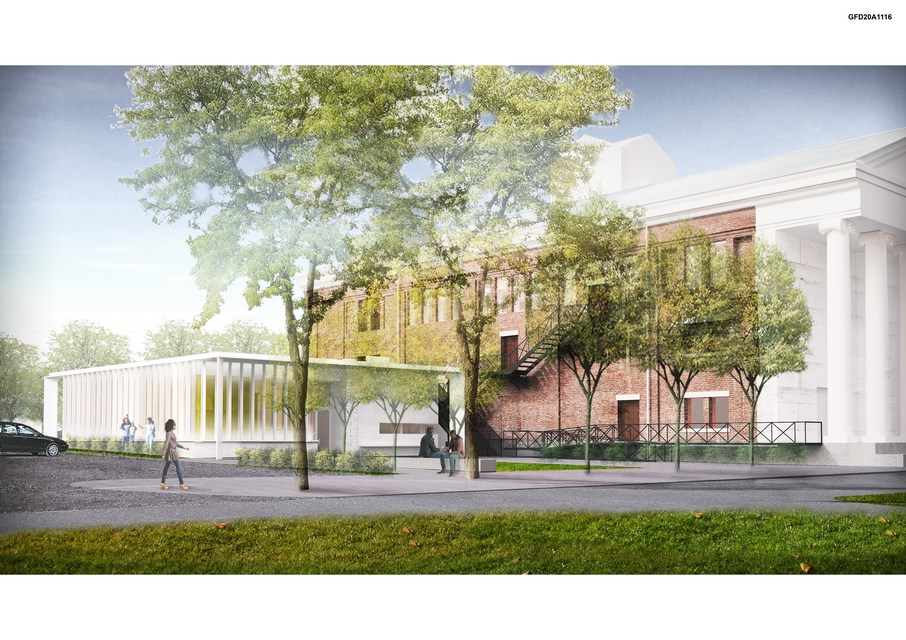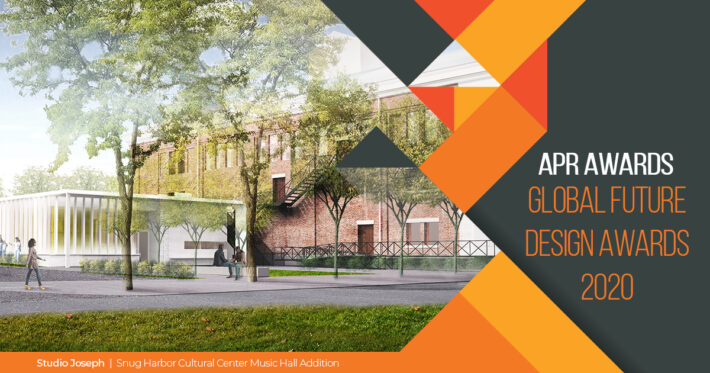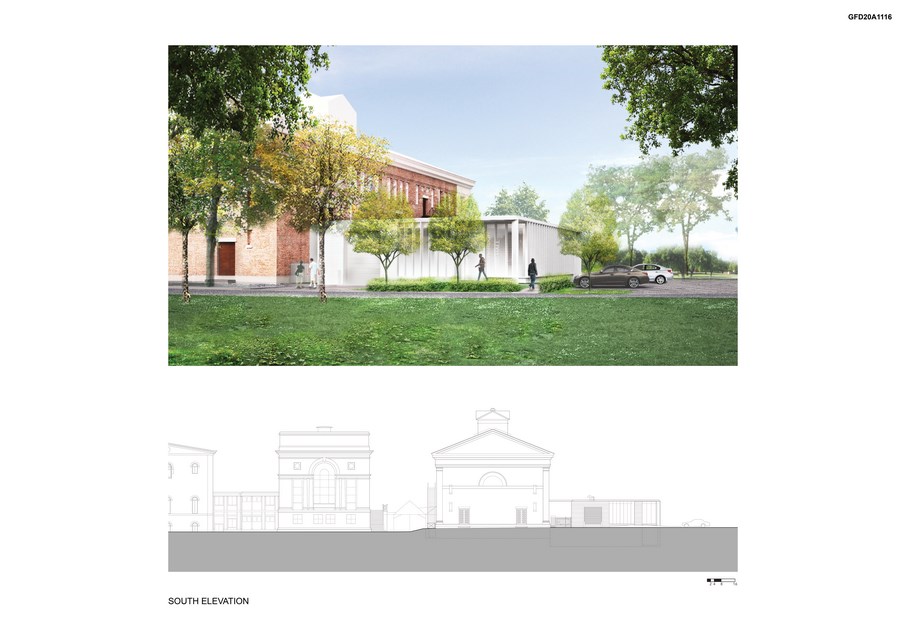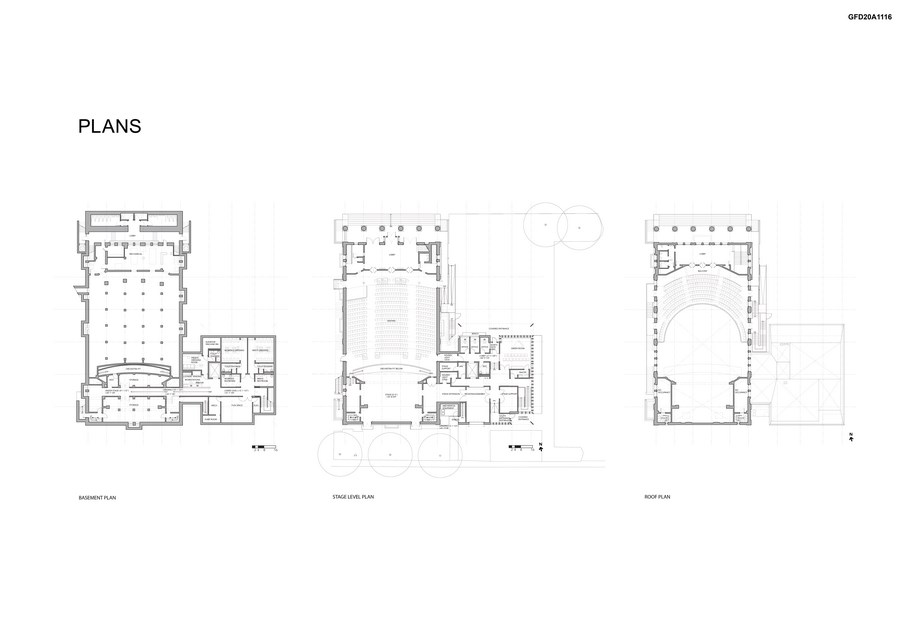As the second oldest music venue in New York City, the Music Hall is a cornerstone of the Snug Harbor Cultural Center’s programming. The 121-year old Music Hall’s absence of a loading dock, ADA access from the house to the stage and orchestra pit, and public Assembly Permit, and Certificate of Occupancy, prevented program opportunities and limited operation efficiency. The Hall also lacked specific equipment and specialized dressing rooms to comply with Actors Equity guidelines. Our Addition and renovation comply with New York City’s goals of “Active Design”, resilience and LEED Gold-level certification while furthering a commitment to enriching culture and providing equal access.
Winner- Global Future Design Awards 2020
Firm | Studio Joseph
Architect/Designer | Wendy Evans Joseph
Category | Cultural—Unbuilt
Team | Wendy Evans Joseph, Alexios Bacolas
Country | United States
Photographer/Copyright | ©Studio Joseph

Located amongst the historic buildings on campus, this Addition contrasts yet compliments the Hall’s Greek Revival style. The Addition sits east of the Hall to facilitate backstage requirements and other site conditions. The new space houses dressing rooms, a Greenroom, offices, a loading dock, gathering spaces, flex space, storage, pantry, and other back-of-house support spaces. The thoughtful consideration of the Addition’s internal circulation allows its two entrances—public and staff/actor—to align strategically on axis with the site’s renowned, iconic Neptune Fountain. Instead of treating required spaces in traditional ways, the Addition’s design pushes to enable a crossover with other community uses. For instance, the Green Room AV/IT capabilities allow it to also function as a public meeting space. Likewise, flex space primarily used for overflow dressing room also doubles as a rehearsal room as it has proper acoustical control and a large format mirror/bar for dance.
Using white concrete and a boldly reductive steel and glass enclosure, the Addition’s massing and materiality imbue it with a strong sense of gravitas. At the same time, its modernist vocabulary allows the Hall and Addition to coexist. Deep overhangs on the Addition’s north and south sides strategically echo the Hall’s distinctive porch entry while providing shelter from the elements.
The theater’s backstage area contains a high level of transparency that brings natural light and public engagement to the performer’s experience. Low-E glass fenestration containing a gradient dot frit-pattern screens heat while allowing views. Metaphorically, the pattern evokes early morning sea mist. An 8” deep white aluminum system with tapered fins acts as a sunscreen while giving the white façade greater visual depth and quality.
The Addition’s pragmatic interior planning entails efficient ductwork and exposed lighting. Responding to the need for durability while reflecting light color and views from the parkland, vertically ribbed stainless-steel panels line circulation hallways.
Integral to the use of the building and visible from the exterior, the interconnecting stair (lower level to grade) is an essential part of a strategy for healthy living. This visibility made the stair an ideal choice for a collaborative art project by artist Saul Becher, funded as part of the New York City Percent for Art program. Viewed from the exterior on the east façade, the mural’s stylized realism of trees growing out of a sunken military barge makes for an exciting counterpoint to the abstract nature of the building. Moreover, the mural is a reference to the marine origins of the Cultural Center, which initially functioned as a refuge for retired sailors until the mid-1900s and was aptly named “Sailors Snug Harbor”.








